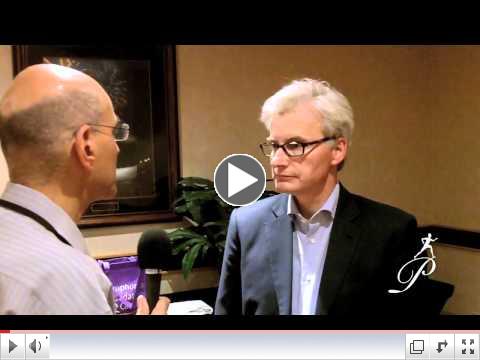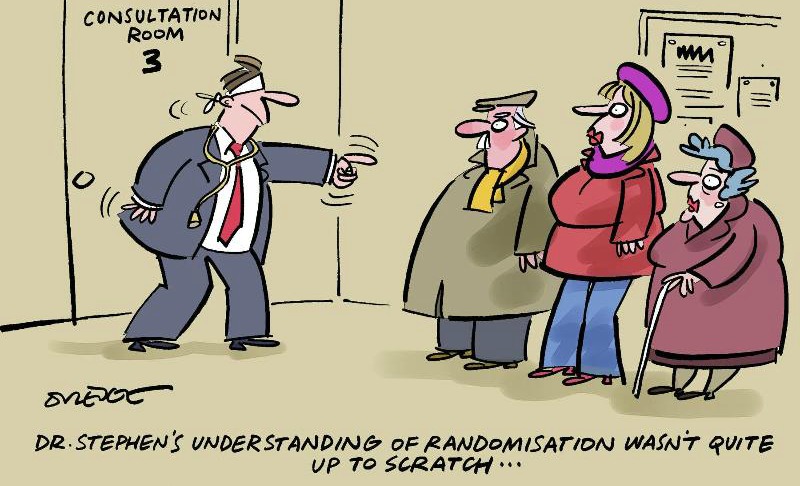|
BE SOCIAL
| |
__________________

Join our Cause
__________________

|
|
FEATURED VIDEO
|
 | |
Bendamustine: A Less Toxic Therapy for CLL?
|
Andrew Schorr (founder of Patient Power) interviews Dr. Mathias Rummel (Justus-Liebig University Hospital, Giessen, Germany) who has been studying bendamustine for several years.
_______________
Click here to see a list of clinical trials incorporating bendamustine for CLL patients.
|
|
EXTRA! EXTRA!
| 
The latest issue of the CLL Research Momentum was sent out a few weeks ago. Click here to read the newsletter.
This issue features an interview with Dr. Stephan Stilgenbauer, a CLL geneticist from Germany. We could not include the whole interview in the newsletter, so we have posted an extended version on our website. Click here to read the extended interview.
 | |
Dr. Stephan Stilgenbauer
|
SEND US YOUR MAILING ADDRESS IF YOU WOULD LIKE TO RECEIVE HARD COPIES OF THE CLL RESEARCH MOMENTUM.
info@cllglobal.org |
|
EBAY / MISSIONFISH
| You can sell anything on eBay! Click on the water color image to learn more about it and to check out other items being sold to support CLL research:
|
|
QUESTIONS/COMMENTS? | |
Is there something specific you want to read and learn about?
Let us know if you have any comments or suggestions for improvement.
You are the reason CLL Global exists, and we want to hear from you.
info@cllglobal.org |
|
DONATE NOW!! | |

|
|
|
|
Greetings!
We are pleased to provide you this month's issue of Tidbits. For your education this month, information is provided on the drug bendamustine. We continue to promote the creative fundraising ideas as we approach the half way point of 2012. You can also read about Phase III trials and learn about a few trials for CLL that are recruiting or will be recruiting soon.
|
|
CLL EDUCATION
| |
Bendamustine Holding Its Own
In Tidbits we often discuss new drugs on the horizon or those being tested under clinical trials. However, we should not forget to provide updates on those agents that have been previously approved. One of the more recently approved drugs for CLL is bendamustine which is better known to patients as Treanda (in the United States) or Ribomustin (in Europe).
Bendamustine was originally developed in East Germany in the 1960's during the era of the Iron Curtain. It was not until the reunification of Germany in the 1990s that it became available for the rest of the world to study. Bendamustine is said to have the chemical structure of both alkylating agents and purine analogs which are two different classes of
chemotherapy. Each class disrupts DNA via different  pathways. This potential dual action makes bendamustine an effective treatment, although the exact mechanism of action remains unknown. It is also uncertain whether having one drug with dual actions is superior to giving two separate drugs such as fludarabine (a purine analog) and cyclophosphamide (an alkylating agent). These two drugs are part of the current standard treatment regimen for CLL (fludarabine, cyclophosphamide + rituximab or FCR). pathways. This potential dual action makes bendamustine an effective treatment, although the exact mechanism of action remains unknown. It is also uncertain whether having one drug with dual actions is superior to giving two separate drugs such as fludarabine (a purine analog) and cyclophosphamide (an alkylating agent). These two drugs are part of the current standard treatment regimen for CLL (fludarabine, cyclophosphamide + rituximab or FCR).
The toxicity associated with bendamustine is manageable compared to other commonly used chemotherapeutic agents. The exception to this is chlorambucil, another agent which was the first effective treatment used for CLL. However, chlorambucil is significantly less efficacious than bendamustine, so the general thought is that the benefits of bendamustine outweigh the risks. Patients who do experience side effects report the usual suspects such as nausea, headache, fatigue, diarrhea and the like. The only major long term negative effect related to bendamustine is bone marrow suppression. This means that the white blood cell, red blood cell and platelet counts may not fully recover. Different side effects can occur depending on which blood cells are affected. For example, a low white blood cell count can lead to infections, low red blood cell count can cause anemia, and low platelets can cause easy bruising and wounds may take longer to heal.
In 2008 bendamustine was approved by the FDA, as a single-agent or in combination with other anti-cancer agents, for the treatment of CLL and indolent B-cell non-Hodgkin's lymphoma. A high percentage of CLL patients respond to bendamustine as a single agent, but complete response rates (remissions) are low. Therefore, bendamustine is being used in combination with other drugs, especially monoclonal antibodies. The German CLL Study Group is currently conducting a clinical trial comparing bendamustine + rituximab (BR) against FCR. There are 800 patients enrolled in the German trial. Initial results are expected sometime in 2013. The hope is that the BR combination is as effective as FCR, but less toxic. It will take several years to evaluate whether BR or another combination using bendamustine is superior.
|
|
PARTNER PERSPECTIVE
| |
eBay Giving Works, MissionFish
Our supporters are always finding nontraditional ways to raise funds. Selling items on eBay is another easy avenue to support CLL Global. eBay.com is an auction and shopping website for people and businesses acros s the world. Through eBay Giving Works, sellers can designate a percentage of their proceeds to CLL Global. A special icon is displayed on listings posted through eBay Giving Works so that buyers know a portion of their payment is going to a charitable cause. Buyers can add an additional donation to their purchase during checkout. eBay Giving Works makes it possible for nonprofits like CLL Global to benefit from the billions of dollars that are exchanged through eBay each year. s the world. Through eBay Giving Works, sellers can designate a percentage of their proceeds to CLL Global. A special icon is displayed on listings posted through eBay Giving Works so that buyers know a portion of their payment is going to a charitable cause. Buyers can add an additional donation to their purchase during checkout. eBay Giving Works makes it possible for nonprofits like CLL Global to benefit from the billions of dollars that are exchanged through eBay each year.
MissionFish is the organization that is responsible for collecting the donations from eBay Giving Works and delivering them to nonprofits. MissionFish also distributes the tax receipts and manages the tax benefits of giving. The purpose of MissionFish is to help organizations find new sources of funding and allow organizations to focus on their mission without having to worry how to secure the next donation.  According to the MissionFish website, their "mission is part of a larger vision, which can be summed up as: any cause, any donor, any gift. To make that happen, [MissionFish is] making it easy for people to give as a part of their daily lives, and [they are] working to change the way that we all think about philanthropy." eBay sellers who participate in the eBay Giving Works program are rewarded for their generosity with special features that help them get more bids and higher sale prices. According to the MissionFish website, their "mission is part of a larger vision, which can be summed up as: any cause, any donor, any gift. To make that happen, [MissionFish is] making it easy for people to give as a part of their daily lives, and [they are] working to change the way that we all think about philanthropy." eBay sellers who participate in the eBay Giving Works program are rewarded for their generosity with special features that help them get more bids and higher sale prices.
Click here to learn more or feel free to contact us with any questions.
|
|
CLINICAL TRIALS AND YOU
| |
Phase III Clinical Trials
In the last two issues of Tidbits, we discussed that Phase I trials examine the safety of a new drug or regimen, and Phase II trials establish whether the treatment is effective and give researchers a better idea of the potential side effects. Phase III trials are generally considered the final testing phase before a treatment is reviewed for approval by the US Food and Drug Administration or a comparable international agency. In order for a treatment to be approved, it generally must be established as being either equally effective and less toxic or more effective than the current standard treatment(s).
Phase III trials are usually open at multiple institutions, making the experimental agent more widely available and more easily accessible for patients. Often, the Phase III trials are large, randomized clinical trials. In randomized clinical trials, patients are either put on the investigational agent or the current standard treatment. The selection is done by a computer/randomization system so that there is no bias.
 | | Image provided by www.icr-global.org |
Randomization helps ensure that the experimental and comparator groups have similar characteristics. This helps provide researchers confidence that any differences in how the two groups respond to the treatments are due to the treatments and not to other differences between the groups. Randomized trials help demonstrate to regulatory agencies and insurance carriers that a particular agent or regimen is beneficial on average to a large population of patients.
In clinical trials for cancer treatments, a placebo may be given if a drug is being tested to be used as part of combination treatment. As an example, a control group may be given rituximab plus a placebo while the study group would be given rituximab plus the experimental agent. Placebos are generally not given alone in clinical trials for cancer treatments. Interim results of the trials are monitored to avoid continuing to randomize patients after it has been determined that one treatment is superior to the other. Some studies offer a "cross-over" opportunity so that individuals not responding on one arm of the study may switch over to the other arm.
Phase III trials are the most reliable tool for confirming the efficacy of new treatments. They can be large, time-consuming and expensive because they are essentially "the last stop" before FDA review. After the Phase III trial, the FDA reviews the clinical trial results as part of a New Drug Application (NDA) to make sure the treatment is safe and effective for use by all patients. If the FDA approves the NDA, then the company can begin selling the drug for the approved indication or use.
|
|
THANK YOU FOR SUPPORTING US! | | |
As summer approaches, do not forget to wear that sunscreen! We we will talk more about that next month and tell you about what happens after Phase III trials.
Sincerely,
CLL Global Research Foundation
|
|
|